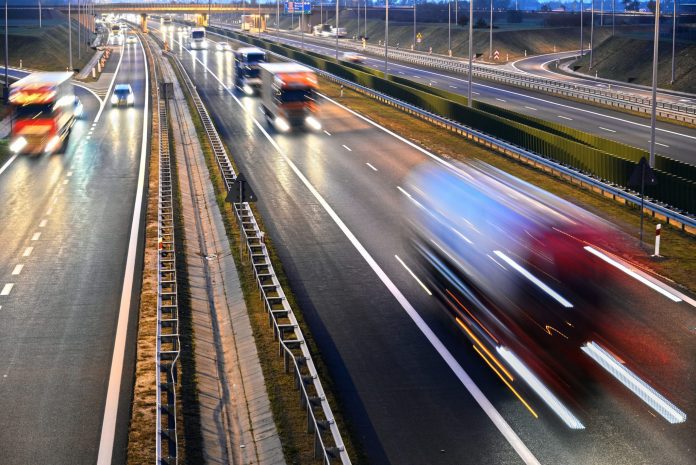For more information on Intelligent Transportation Systems, download this free report
Intelligent Transportation Systems are made up of advanced applications developed with the main goal of providing innovative services relating to different modes of traffic management and transportation. These applications are deployed with the ultimate goal of allowing users to be better informed and make safer and smarter use of transportation networks.
According to the U.S. Department of Transportation, Intelligent Transportation Systems “apply a variety of technologies to monitor, evaluate and manage transportation systems to enhance efficiency and safety.”
Some of the most frequent and basic Intelligent Transportation Systems already implemented globally include calling for emergency services when an accident occurs, the use of cameras to enforce traffic laws or the installation of signs that mark speed limit changes on highways. However, these systems are expected to be more complex in the future, with new Intelligent Transportation Systems use cases emerging as technologies such as IoT, 5G, artificial intelligence (AI) and edge computing become more widely available.
What’s the market outlook for Intelligent Transportation Systems?
Analysis from KPMG and global market intelligence firm IDC estimates that by 2023, with an uptick in the adoption of 5G and edge computing, the smart transportation market is forecast to drive $24 billion in annual revenue into the entire ecosystem, which includes connectivity, hardware, software and services, compared to annual revenues of $12 billion in 2019.
KPMG highlighted that the large volume of sensors and devices along roadways and in parking systems requires 5G’s massive density as the improved latency, higher network capacity and elimination of poor coverage means faster and more accurate insights, which also translates into better performance, smoother transit and traffic flow, and fewer accidents.
The proliferation of IoT devices and 5G technology at a global level are key for the development of Intelligent Transportation Systems. IoT is essential for the provision of sensors and controllers that can be embedded into nearly any physical machine to be controlled and managed remotely, while 5G technology provides the high speed communications needed for managing and controlling transportation systems in real time with very low latency.
Apart from 5G and IoT, the widespread use of other innovative technologies such as AI and edge computing will open up new possibilities for Intelligent Transportation Systems, with more futuristic use cases around the corner.
However, despite the continued evolution of new technologies paving the way for a more massive adoption of Intelligent Transportation Systems use cases, both government agencies and tech providers need to work in close cooperation to enable these deployments, as well as define proper business models.
What are the experts saying about Intelligent Transportation Systems?
To get a better understanding of what leading ecosystem stakeholders are thinking related to issues concerning Intelligent Transportation Systems, Enterprise IoT Insights polled a number of experts as detailed below.
Stefan Myhrberg, Head of Road ITS, Intelligent Transport Systems at Ericsson: Intelligent Transportation Systems is “an umbrella term for how ICT can improve the transport sector and [it] embraces many application areas ranging for road pricing to V2X and self-driving vehicles.”
Mike Mollenhauer, Division Director of Technology Implementation at the Virginia Tech Transportation Institute: “The current state is that many Departments of Transportation…and municipalities are looking at ways to have smarter Intelligent Transportation Systems. This typically means more connectivity and more sensors being deployed to get more intelligence from what they can gather from the field. I would say that as an industry we are not necessarily moving forward as quickly as we could on the connected side of things.”
Michelle Maggiore, Country Digitalization Manager, Cisco: “Intelligent Transportation Systems are delivering applications that benefit both system operators and the traveling public. The benefits of ITS for things like congestion reduction, environmental quality and traveler experience far outweigh the cost. As the costs of things like edge computing continue to decrease, we see low-latency applications transforming safety, particularly for things like pedestrian protection.”
Jim Misener, Senior Director of Product Management and C-V2X Lead, Qualcomm: “Along the way, ITS has spawned a host of ‘electronics-meets-the-highway’ innovations that have become mainstream tools for things like traffic management, changeable message signs and coordinated traffic signals. But with the advent of and the push for Connected and Automated Vehicles (CAV), it has come full circle. In short, CAV is the instantiation of the Intelligent Vehicle Highway Systems (IVHS) vision. What has changed is that technologies — and from my perspective primarily communications technologies — have finally met the vision.”
Roch Muraine, Worldwide Sales Director for Transportation, Alcatel-Lucent Enterprise: “Considering the multiple subsections of Intelligent Transport Systems, each evolving at their own rate, it is difficult to say how ITS is evolving as a whole. It is also worth mentioning that many ITS projects have been paused due to COVID-19 and many active startups have folded or changed direction. As a result, the innovations of the future we discussed a few years ago, such as self-driving cars for example, remain in the future rather than in the present day.”
Justin Belk, Statewide Integrated Corridor Operations Engineer at Washington State Department of Transportation: “For the Washington State Department of Transportation, ITS started decades ago as a way to utilize technology by primarily enhancing traveler information and improving flow to address congestion in regions like the Seattle metropolitan area, where adding additional lanes is not feasible or cost effective. Over time, strategies have matured and technology has increased to enable solutions reaching across the geographic diversity of our state. We now view ITS as one tool among many as we use Transportation Systems Management and Operations (TSMO) strategies to enhance safety and mobility for all modes of transportation, in a variety of settings.”

